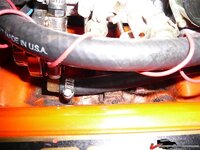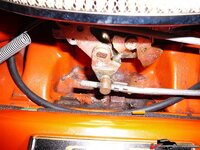AColbe01
Active member
Old girls runs like crap after sitting in traffic or other extended idle situation, rpm drops, runs rough, temp above 210. Gut feeling gas is boiling in the carb, have the phenolic spacer installed but want to keep the heat from ever getting to it. Yea I know the stainless heat shield/ baffel would work better under the carb rather than in the glovebox! Which leads me to wonder how to keep heat from ever gettomg there.
Fuel line is rubber and not touching the manifold!

See how the paint is history.

Here's the intake without the carb.

or

Know I'll make a mess with the coolant and getting the dizzy back where it's supposed to be. I'm better at twisting the key than twisting a ratchet!
Have learned a great deal on this old car though, oddly the song popped in my head as typing, "We'll get by with a little help from our friends!!"
TIA
Andy
Fuel line is rubber and not touching the manifold!

See how the paint is history.

Here's the intake without the carb.

or

Know I'll make a mess with the coolant and getting the dizzy back where it's supposed to be. I'm better at twisting the key than twisting a ratchet!
Have learned a great deal on this old car though, oddly the song popped in my head as typing, "We'll get by with a little help from our friends!!"
TIA
Andy

